Feeding and drinking
Introduction
Feeding plays a key role for chicken health and performance. With inappropriate nutrition, layers or broilers will not be able to perform to their potential. Also, their immune system is weakened, making them more prone to illness and diseases. Ensuring an appropriate diet that meets the nutritional needs of the animals will pay off with good health and performance of the birds.
Concerning the sources of feed: Certified organic producers must use organically produced feed from the own farm or from proven biological sources to the best of their ability.
Which feed is suitable?
Different chickens have different nutritional needs. Needs depend e. g. on age, purpose and breed (layers, dual purpose breeds or broilers). Therefore, the perfect chicken feed for all situations doesn’t exist. However, some farmers may be able to purchase a commercially produced “complete feed” that has been specially formulated to take into account the type and life stage of the birds. Such feeds are formulated to satisfy all of the nutritional needs of the birds without requiring any other feed or supplements. Therefore, they are a safe and easy solution. The same applies for organic complete feed in the case of certified organic production.
However, many farmers do not have access to, or cannot afford commercial organic complete feed, or wish to mix their own feed using components found or grown on the farm. In this case, it is important to understand the basics of chicken nutrition, as explained in the following sections. Additionally, someone experienced should be consulted to critically check whether the planned feed rations are sufficient for the respective chickens.
Basics of nutrition
Energy
Animals, as humans, need enough energy in the form of calories to survive and thrive. Calories can originate from carbohydrates, fats or proteins. In addition to energy, all animals also require vitamins and minerals. All feed sources contain a mixture of some or all of these components. However, too much or too little of some components can lead to health and productivity issues for the birds.
Carbohydrates
Carbohydrates are a quick source of energy. They should make up the largest part of a bird’s diet, more precisely 68 to 74 % of the diet. 2 to 8 % of the carbohydrates, depending on the age and type of the birds, should be fiber.
The main common sources of carbohydrates are cereal grains and the stalky parts of plants for fiber. A good mixture of grains and access to pasture will provide an excellent feed base for chickens.
When mixed into a feed ration, grains should be coarsely ground, with the grain components still visible (not finely ground as flour).
Grains can also be soaked in water for a few hours before feeding them to the chickens. Smaller portions of wheat grains can be scattered in the littered area to increase scratching activity.
Proteins
Proteins make up the next largest part of a bird’s diet. Depending on the age and type of bird, they should make up 16 to 22 % of the diet.
In their bodies, the birds break down the proteins into their components, called amino acids. Birds need 20 different amino acids to live and grow. A bird’s body can produce ten of these amino acids itself, essentially from other amino acids. However, the other ten amino acids need to be provided from good quality protein sources in the diet. Unfortunately, there is no protein source that contains all of the essential amino acids that birds cannot produce themselves. Therefore, different protein sources need to be mixed in order to get a suitable ratio of all essential amino acids.
The amount of protein in the diet should be estimated carefully, as too much protein in the diet can be harmful to the birds, negatively affect the environment (with excess excretion of nitrogen), and is expensive.
Common sources of protein are legumes (beans, peas, groundnuts, etc.), insects and fish by-products (e. g. fish meal). In cereal grains, the protein content is quite low, but can be increased by the sprouting of the grains.
Lysine and methionine are two amino acids that are very important in poultry diets. Deficiencies of lysine and methionine can cause reductions in production and overall health. Therefore, they should be given special attention when choosing protein-rich feeds.
Important sources of lysine are animal proteins from e.g. fishmeal and other fish products, and dairy products; and plant-based proteins from dried yeast, meal/cake from oil plants, lucerne meal, maize gluten, potato protein, and grain legumes.
Important methionine sources include animal sources like fish meal and fish products, milk powder, and plant feed sources like brewer’s yeast, soybean cake, rapeseed cake, potato protein, sunflower seed cake, and millet.
Fats
Fats should make up a small part of a bird’s diet. Depending on the age and the type of the bird, fat should make up 4 to 6 %. Fats are rich in calories and help ensure that the birds get enough energy from the diet. They also help the birds to digest certain vitamins, and give the feed a good taste.
Fats are important in hot climates, as the energy from fat is easily absorbed. Therefore, under very hot conditions, carbohydrates should be partly replaced by fats in the diet to prevent birds from overheating.
Absorbed fats are also transferred to the eggs. Providing the correct amount and type of fats contributes to a balanced mixture of “good fats” (omega-3) and “bad fats” (omega-6) in the eggs, and thus to healthier eggs for consumers.
Common sources of fats are animal and vegetable oils (and their by-products e. g. sunflower seed oilcake). Fat sources like flaxseed, camelina and fish meal have high levels of “good fats” (omega-3) that are important for human health.
Minerals
Minerals make up a small, but vital part of a bird’s diet. Minerals enable critical reactions in the body. Calcium and phosphorous are essential for the formation of strong bones and a hard egg-shell. The key minerals calcium, phosphorous and sodium should make 1 to 5 % of the feed ratio, depending on the age and type of bird. The necessary calcium : phosphorus ratio varies depending on the stage and type of bird. While growing birds need a ratio of 1 to 2 parts of calcium to 1 part of phosphorous, laying hens need more calcium (3 to 6 parts of calcium to 1 part of phosphorous).
Sodium (salt) is usually found in sufficient amounts in a normal diet. Attention must be paid to not overfeed the birds with food left-overs that have been seasoned with salt. Cooked food left-overs should be rinsed or soaked and strained before feeding them to chicken.
Common sources of minerals (especially of calcium) include limestone, oyster shells, snail shells or egg shells. If none of these sources are available, a commercial organic premix (e. g. a purchased mix like shell grit) should be used.
Birds should always have access to free choice minerals, starting from a young age (e. g. a separate shallow dish or dishes containing minerals should be available to all birds). Whatever type is chosen, it should be ground to a small size. If using egg shells, they should be roasted and crushed before feeding to avoid getting the birds into the habit of eating eggs.
Vitamins
Vitamins make a quantitatively small share of only about 1 % in poultry diets, but are vital substances. Vitamins are essential for critical chemical reactions in the body metabolism, and contribute to general health with strong bones and high-quality eggs. While Vitamin A is crucial for vision, Vitamin D is involved in bone formation and egg production.
As for proteins, no single source contains all vitamins in the required ideal composition for poultry. However, chickens who have regular access to good pasture, or who are fed high quality vegetable and fruit scraps should not need additional feeding of vitamins. If the animals cannot regularly access good pasture and are not fed vitamin-rich scraps, it may be necessary to add a commercial vitamin mix to the feed. In case of vitamin uptake with natural feed, excessive vitamin intake should not become a problem. However, vitamin supplements have to be applied according to the directions to avoid unhealthy oversupply.
Other essential feed components
Stomach gravel
Chickens don’t have teeth, so they swallow their food whole. The feed is then soaked in the crop and ground in the stomach. To allow grinding in the stomach, chickens swallow small stones. Over time, these stones are ground down, and chickens must swallow new ones. Therefore, chickens need to have access to appropriate stones regularly and from the first week of life. Stones of e. g. quartz, granite or basalt, which are resistant to the acidic surroundings in the stomach, last the longest and are therefore most suitable.
Chickens in traditional free-range systems usually find appropriate stones themselves, as they roam around freely and are usually guided by their mother hen. In a semi-intensive system, it is important to offer stomach stones to the chickens, e. g. presented in a shallow dish in the chicken house. This dish can be placed next to the dish containing the minerals.
Roughage
Poultry should have access to roughage, too. Hens with access to a green pasture will naturally eat the amount of roughage they need. But it is always advisable to additionally offer fresh or dried plant material (e.g. hay) in the hen house. This is especially important if the plant cover in the pasture is scarce or pasture access is limited.
Roughages provide important carbohydrates in the form of fibre, proteins, fats and vitamins. Eating feathers is a serious sign of a lack of roughage and often leads to feather pecking. If feather eating is observed in a flock, additional roughage must be supplied immediately.
Benefits of roughage intake:
- Fulfils the chickens’ instinctive need to eat structured feed and prevents boredom (and thus feather pecking and cannibalism).
- Has a positive effect on the development and health of the gizzard and intestine due to the fibre.
- Increases the uptake of amino acids from the feed reducing the nitrogen content in the urine and the manure.
- Results in firmer manure which keeps the litter dry and reduces infection pressure.
Water
The bodies of chickens consist of 60 % water, and the inside of the eggs are 70 % water. Continuous access to clean water is critical for the health and productivity of chickens. In hot climates, water is even more important, as it helps the birds to maintain their body temperature and avoid overheating. Chickens require significantly more water in hot temperatures. While a laying hen’s water requirement is 200 ml at 0 °C per day, it is three times as high (600 ml) at 38 °C. Therefore, it is essential that the animals always have enough fresh water, and that a regular schedule for cleaning the drinkers and connecting hoses and pipes is maintained.
Organic approach in poultry nutrition
Organic feed components and feed mixing
For certified organic poultry production, in principle all feed components must originate from organic production. This applies for complete feeds as well as for feed components that are produced and mixed on the farm. However, sourcing organic feed components is not always possible. In this case, the options should be discussed with a feeding expert and the certification body.
Mixing feed is a complex task, as the feed must be appropriate for the age and type of bird (broiler, layer or dual purpose), and involves many factors like the local climate, the season, access to quality pasture, and the availability of local feed components.
Examples of feed rations are available at infonet-biovision.org > Animal health > Chicken). Feeding programs are best designed with the help of experienced extension agents and in coordination with the local organic certification body.
Discussion on possible by-products for poultry feeding
Discuss in groups which local by-products can be used as poultry feed. Then, characterise the products together and discuss their pros and cons regarding poultry feeding.
- Source: a) own farm, b) nearby farms c) local businesses, d) market
- Feed value: group by energy and protein
- Add current prices and availability
- How can the components can be integrated in poultry production (e.g. How are they fed? Do they need to be boiled or roasted?)?
- Is there any risk related to the use of these by-products (animal health, availability, price)?
- What are the challenges in sourcing organic feed materials and how can these be overcome?
Feed storage
Feed must be properly stored to prevent contamination (e. g. mould) that can lead to disease, losses due to storage pests, and to preserve the nutrients in the feed.
The feed should be stored in a cool and dry place to maximise storage time and quality. Plastic bins with lockable tops, or tightly-constructed wooden bins with tightly closing tops are suitable.
Feeding management
Types of feeding
Different management systems, types of birds, and availability of feed components and pasture require different types of feeding. On the slides, it is explained, when the different types might be used, as well as their advantages and disadvantages. In each system, it is essential to watch the birds daily to monitor weight gain or loss, and adjust the feeding accordingly, as birds that are too thin or too fat will have decreased health and performance.
Timing of feeding
Based on the daily rhythm of the birds, it is advisable to feed them in the morning and in the late afternoon or evening (e. g. at 8 a.m. and 6 p.m). The last feeding of the day also helps to attract the chickens into the hen house in the evening.
Access to the pasture is best allowed early in the morning and in the late afternoon, as there are more insects and less heat. This is also the time when chickens search for food under natural conditions. When the chickens have free access to their hen house, access to the outdoors can be granted during the entire day.
For laying hens, the pop holes are best opened later in the morning, after most eggs are laid, to prevent laying activity outdoors. Usually, the pop holes are then left open during the entire day. If chickens don’t have access to the hen house during the day, water must be provided outside in shady places.
Feed preparation
Proper preparation of the feed is as important as the composition. If the food is not appealing or has lost nutritional value because of its preparation, time and money are wasted, and the health and performance of the birds can suffer. When preparing poultry feed, two main recommendations should be followed:
Correct consistency: The components should only be ground coarsely to approximately 1 to 2.5 mm large particles. They shouldn’t be ground finely like flour.
Soaking: Some rations may be more palatable when soaked prior to feeding. Additionally, soaked feed supply additional water in very hot weather. The feed should be soaked just before feeding. And before each feeding the feed troughs should be cleaned to avoid spoilage.
Seasonal considerations
When designing a feeding plan, producers must not only consider the nutritional needs of the animals, but also the change of seasons, and how that might affect the availability of feed components. For example, the nutrient availability from the pasture is not the same during the dry season as during the rainy season with the former offering fewer snails and frogs (thus less protein), and less vegetation and crop residues (thus less minerals and vitamins). Lacking nutrients should be supplemented in the feed during such periods. If it is not possible to produce or purchase a supplemental feed, the size of the flock should be reduced to provide sufficient nutrients to the remaining chickens.
The following items can be used as supplemental feed. They can be saved, found or planted to provide better year-round feed:
- Fresh kitchen food waste (without mould!)
- Cereals, cereal by-products, oilseeds, oilcakes
- Roots and tubers
- Fruits, shrubs and trees
- Nutritious leaves (e. g. amaranth, moringa, cowpea)
- Aquatic plants
- Insects, worms and other small animals found outside
Feeding during moulting
During moulting, chickens renew a large part of their plumage by shedding old feathers and re-growing new ones. Signs of moulting include cessation of laying activity, ruffled re-growing plumage, and many loose feathers on the ground of the chicken house and run.
Moulting is necessary because feathers wear out over time, becoming less able to shed water to keep the bird warm. However, moulting is an energy-intensive time for the birds, as extra nutrients are needed to grow the new feathers. Providing the correct nutrition is critical during this time to allow the birds to moult successfully, recover, and lay again in the following laying period. In addition to good nutrition, special care should also be taken to keep birds busy (e. g. scratching for food, pasture access, etc.) to avoid problems with feather pecking and cannibalism as the shiny, new feathers emerge (see chapter 5.6 A note on feather pecking and cannibalism).
In addition to feeding the complete nutritional requirements of the birds, some additional sources of nutrients should be offered in separate containers at free choice to ensure the birds remain healthy and productive:
Brewer’s yeast: contains methionine (an amino acid that is extremely important and often lacking in a standard diet) and many minerals and vitamins.
- Calcium source (e. g. shell grit)
- Protein source (e. g. insects or fish meal)
- Vitamin source (e. g. freshly cut grasses, herbs, vegetables, fruit)
- Small amounts of wheat sprouts
Synchronisation of moulting
After a laying period of one year, the shell quality of the eggs continuously decreases. Instead of replacing the hens, the laying period can be extended by 6 to 8 months by allowing the hens to moult.
Naturally, the hens of a flock moult staggered by some days to weeks. This can lead to increased feather pecking and cannibalism. Artificial initiation of simultaneous moulting can reduce this behaviour.
Artificial initiation of moulting is only possible in stables with electric light that allows the artificial control day length. Initiation of moulting should only be attempted in healthy flocks! Sick or weak animal will suffer or die during moulting and will not perform better after moult.
To artificially induce the moult, the duration of light is reduced and low-energy food is fed for 14 days, or until all hens stop laying following the program below:
Day 1:
Reduce the light period in the stable to 8 hours, and maintain this duration for 14 days.
Close the access to the pasture. The hens should not scavenge but only eat their feed in the stable. If there is a small run yard with gravel, concrete, sand, bare earth, wood chips, without scavenging opportunity, the pop holes can remain open during the day.
The hens should finish the remaining layer feed. Do not re-fill the feeders.
Do not remove the calcium source (shell grit)! All hens should have free access to it at all times.
Days 2 to 14:
Offer as much bran as the hens can eat instead of the layer ration.
Make sure that calcium is always available, as the hens have to refill their calcium reserves for the next laying cycle.
Make sure that all hens have access to clean water at all times.
When laying activity is down to zero:
Increase the light period step-by-step over two weeks: 3 days of 9 hours, 3 days of 10 hours, 3 days of 11 hours, 3 days of 12 hours, then 14 hours, and – depending on the normal day length – possibly further increase (not longer than 16 hours).
Return to feeding the layer ration over 3 days and stop refilling the bran: 2 days with 50 % of the normal daily layer ration, from the third day onwards as much as the hens want to eat (“ad libitum”).
As soon as the hens receive their normal daily layer ration, give access to the chicken pasture again. Hens are now allowed to scavenge freely.
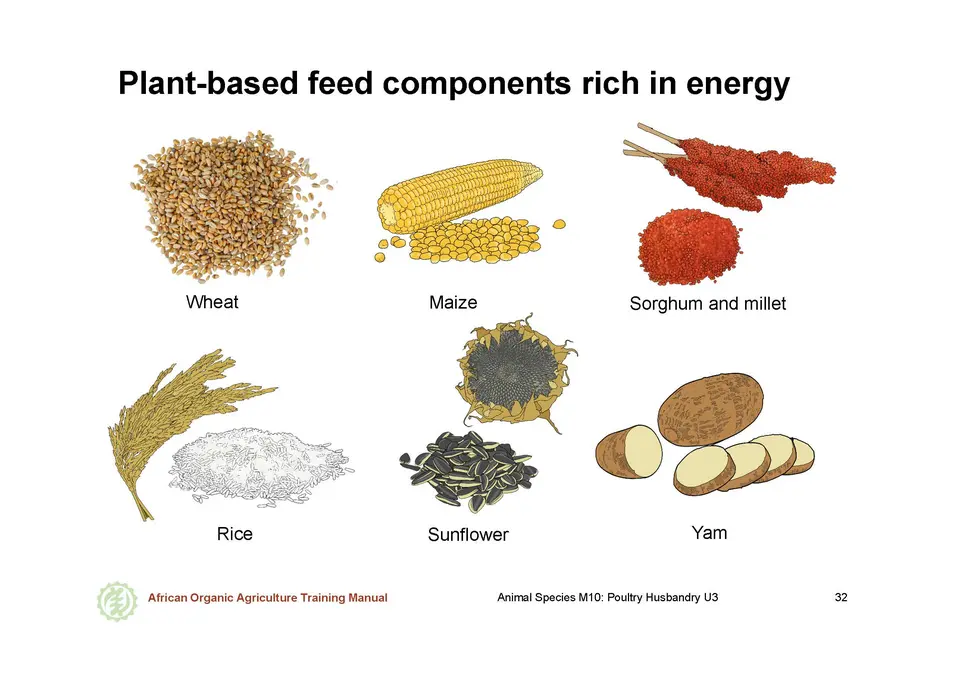
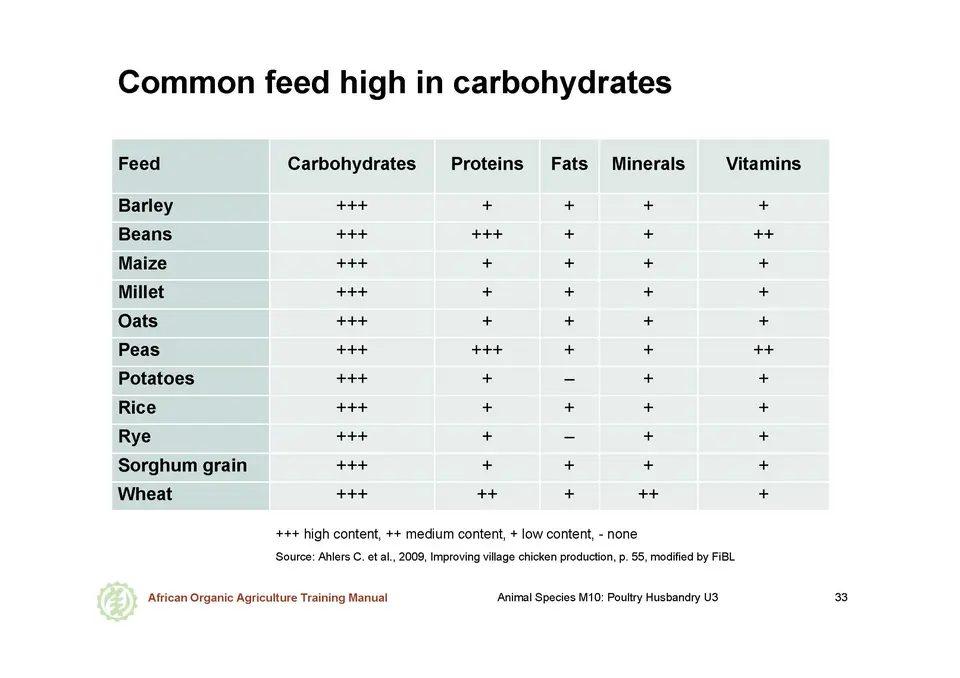
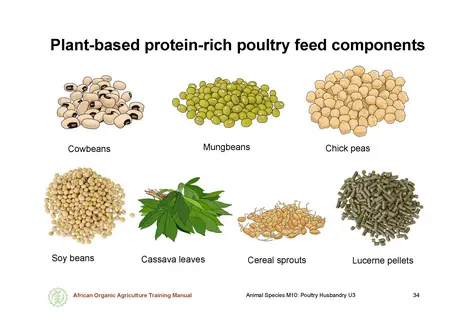
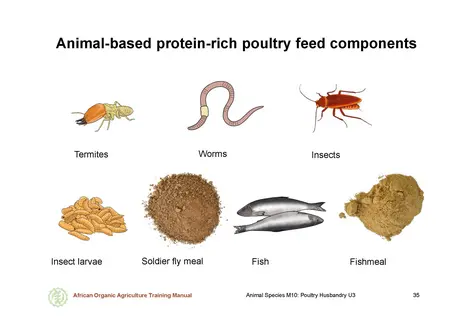
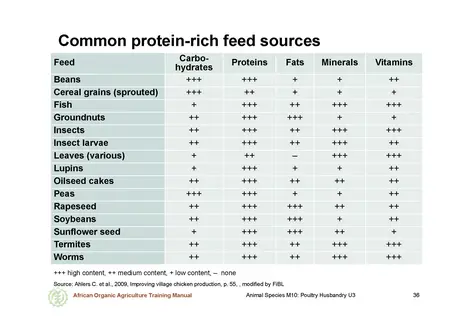
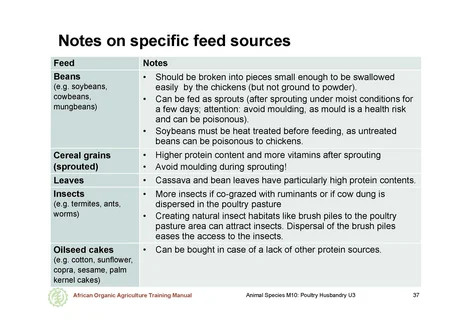
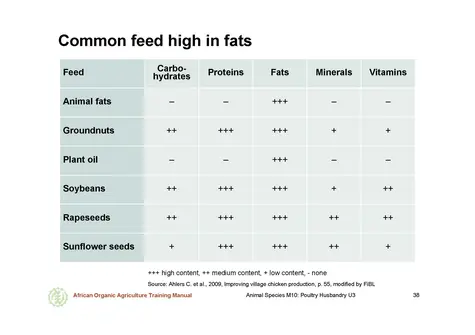
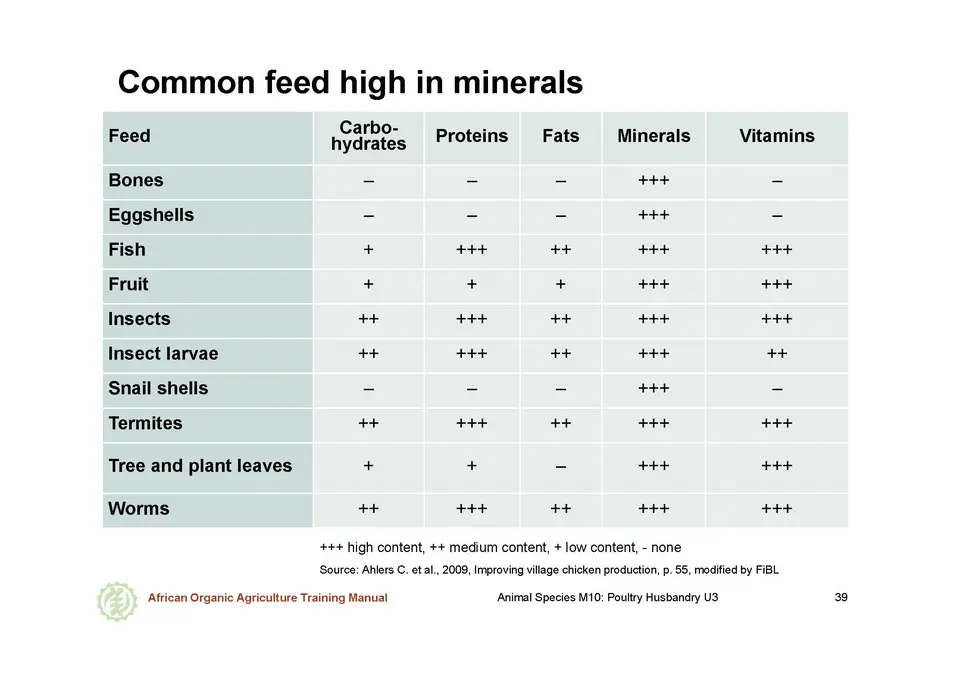
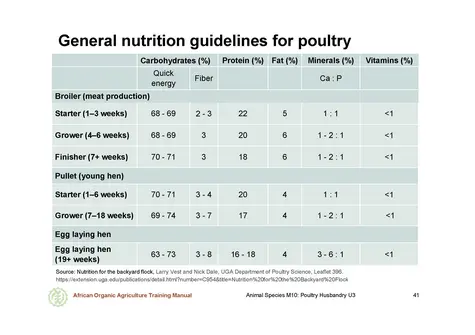
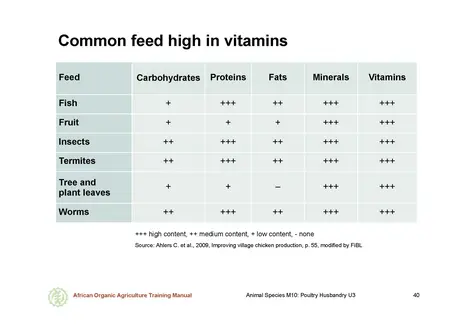
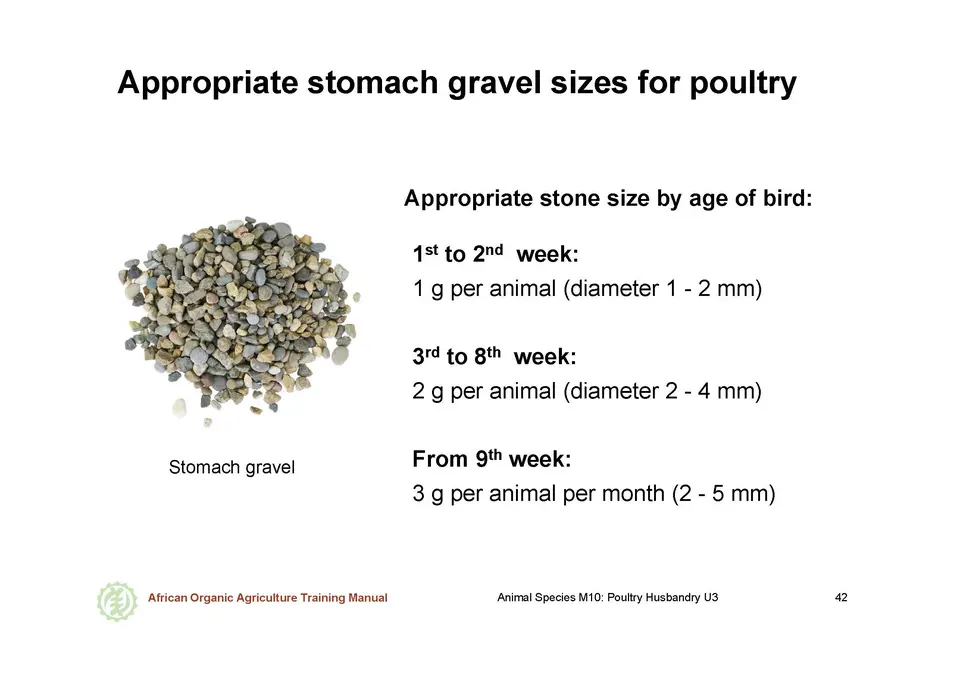
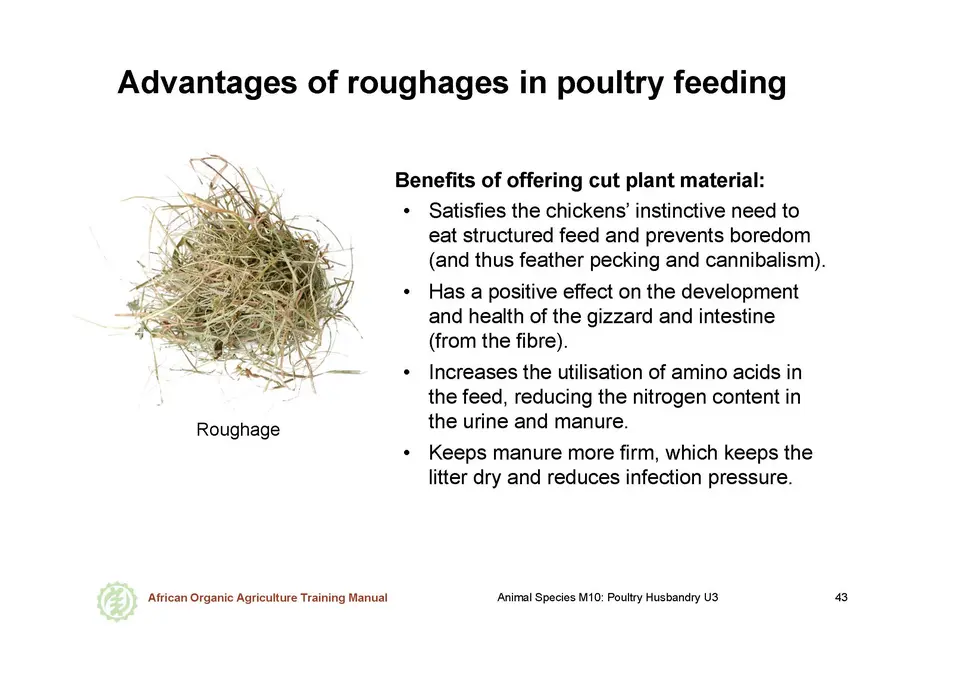
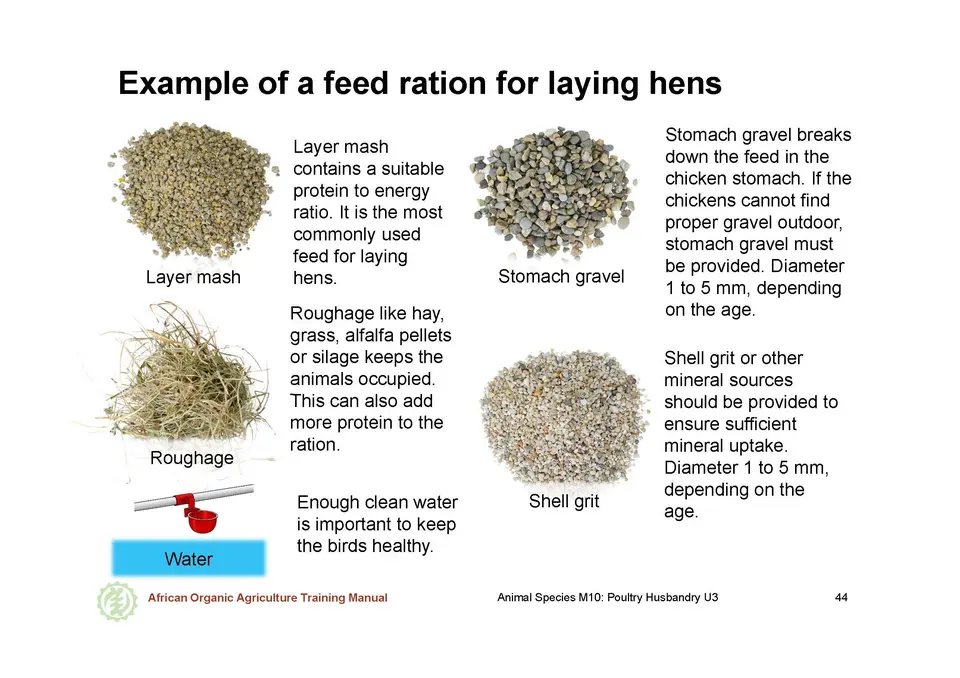
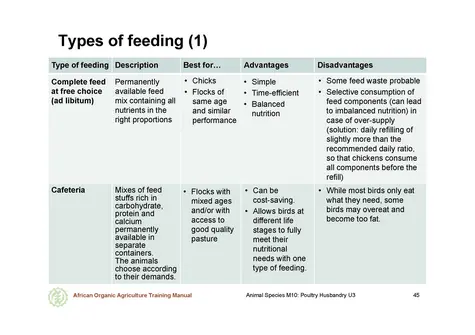
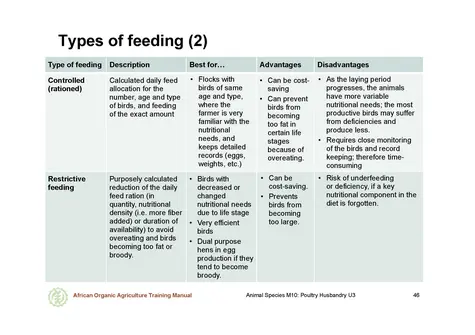
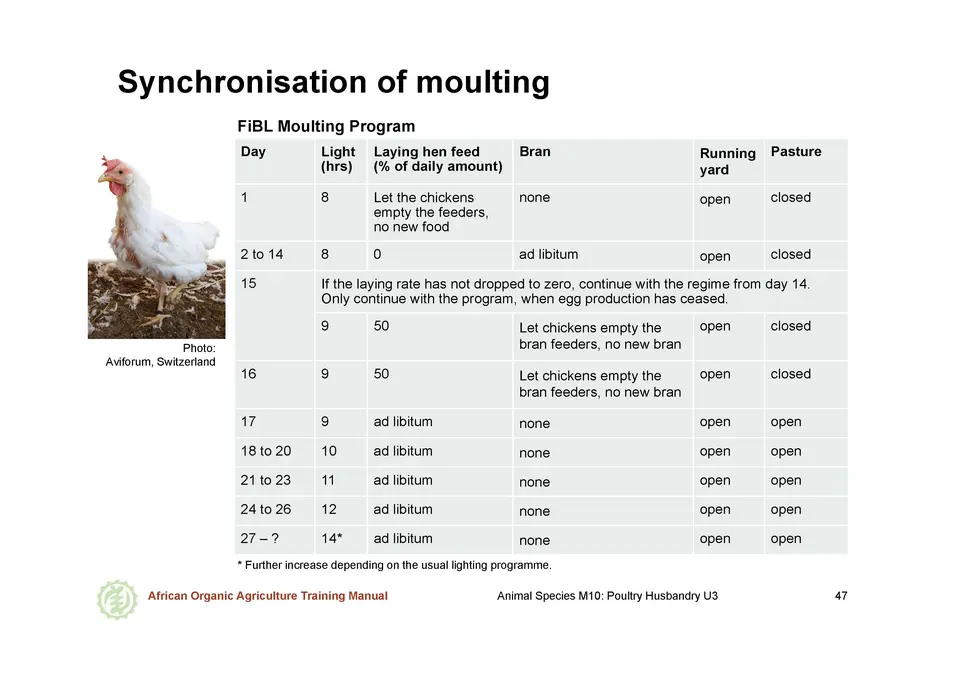
 tap and then scroll down to the Add to Home Screen command.
tap and then scroll down to the Add to Home Screen command.